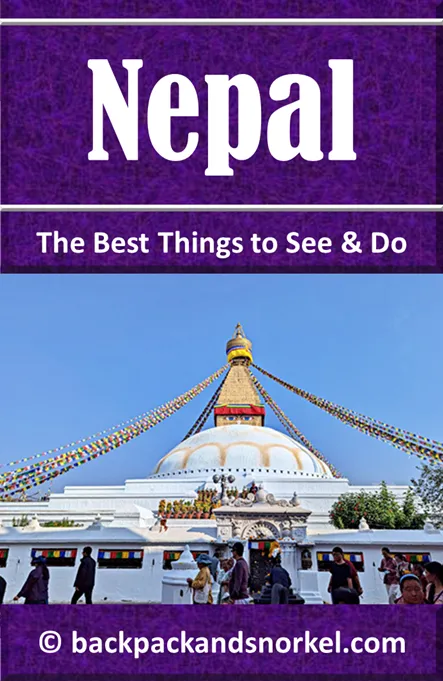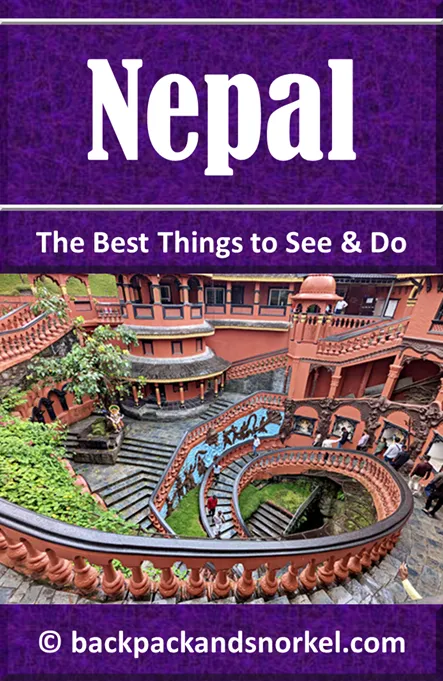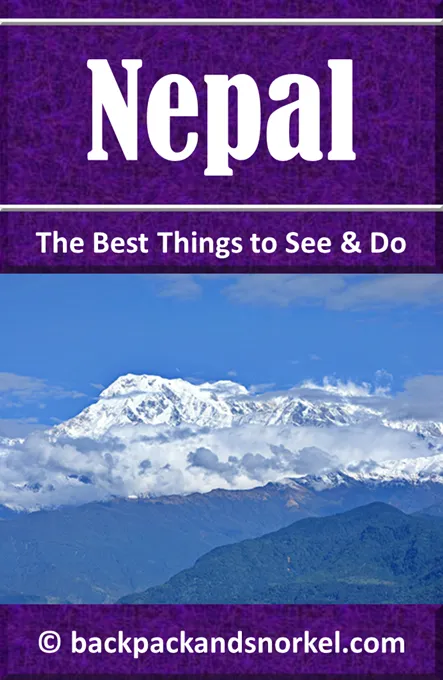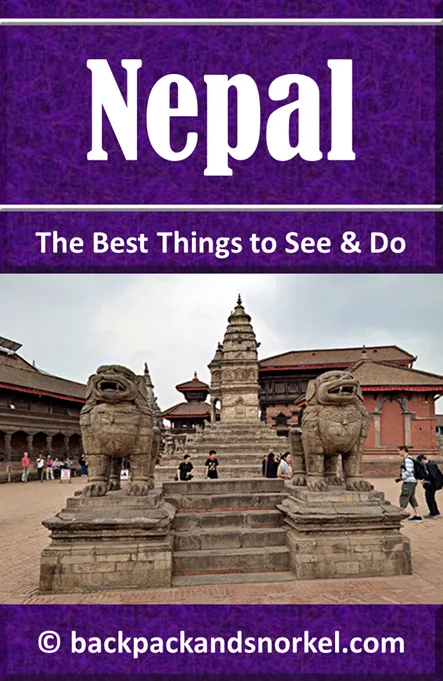Seto Machhindra Nath Temple: Discovering Kathmandu's Revered White Buddhist Deity - Nepal Purple Travel Guide
(map, reviews)
This is Premium Content! To access it, please download our
Backpack and Snorkel Purple Travel GuideThe name ‘Seto Machhindranath’ translates to ‘White Machhindranath’ in Nepali.
Seto means white, referring to the color of the deity’s face.
Machhindranath is derived from Matsyendranath, a revered tantric yogi and a deity worshipped by both Hindus (as an incarnation of Lord Shiva) and Buddhists (as an embodiment of Avalokiteshvara, the Bodhisattva of Compassion).
At Seto Machhindra Nath Temple, Seto Machhindranath is honored as a rain god and a compassionate protector, worshipped by people from all backgrounds for good health, prosperity, and peace.


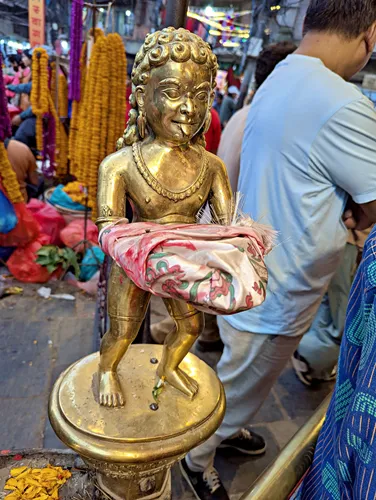
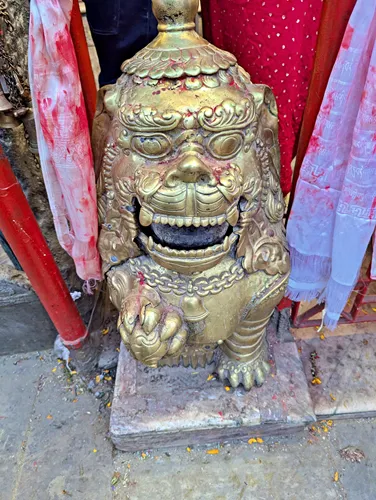
Here at Backpack and Snorkel Travel Guides, we typically promote self-guided walking tours.
But we realize that not everybody likes to walk by themselves in a foreign city. So, just in case that you rather go with ab guide: NO PROBLEM! Please see the Viator tours below.
free GuruWalk tours
paid Viator tours
Historical and Religious Significance of Seto Machhindra Nath Temple
The temple was built in the 10th century during the reign of King Gunakamadeva (949 - 994 AD, Thakuri ruler credited with the founding of the city of Kathmandu which was then known as Kantipur), who is said to have invited the deity to reside in Kathmandu to ensure rainfall and fertility of the land. Over time, the temple became a center for interfaith harmony, attracting both Buddhist monks and Hindu priests.
Seto Machhindranath is considered the guardian of Kathmandu Valley, and his worship reflects the deep respect Nepali culture has for natural elements and divine compassion.
The Seto Machhindra Nath Temple and Its Rituals
The temple features traditional Newar architecture, with a beautiful multi-tiered pagoda roof, intricately carved wooden struts, and prayer wheels lining the courtyard.
Daily rituals are conducted by both Hindu and Buddhist caretakers, a rare but meaningful display of religious syncretism.
Devotees light butter lamps, offer flowers, and walk around the central shrine in clockwise circumambulation, a common form of reverence in both religions.
The Seto Machhindranath Jatra (Chariot Festival)
One of the highlights of the temple’s calendar is the Seto Machhindranath Jatra, held annually in March or April. A massive, elaborately decorated wooden chariot carrying the image of the deity is pulled through the streets of central Kathmandu, including Ason, Indra Chowk, and Hanuman Dhoka. This vibrant, multi-day event draws thousands of locals and visitors, uniting the community in prayers for rain, fertility, and blessings.
The vibrant annual chariot procession of Seto Machindranath in Kathmandu is rooted in a fascinating tale that intertwines royal ambition, divine intervention, and the very fabric of local belief. The story goes that during the reign of the ambitious King Yakshya Malla, the allure of Swayambhunath was so potent that locals who bathed in the holy rivers and visited the stupa were believed to ascend directly to heaven upon death.
This celestial traffic didn't go unnoticed. Yamaraj, the formidable God of Death himself, is said to have journeyed to Swayambhunath, perhaps to understand the source of this unusual phenomenon. However, his return from the sacred site took an unexpected turn. King Yakshya Malla, a ruler known for his spiritual pursuits and the guidance of his Tantric Guru, managed to capture the Lord of Death. Driven by a desire for ultimate power, the king demanded nothing less than immortality from Yamaraj.
Faced with this mortal predicament, Yamaraj sought the aid of a compassionate deity: Arya Awalokiteshwor, appearing in his serene white form as Seto Machindranath. The legend recounts his miraculous emergence from the waters at the confluence of the Kalmati and Bagmati rivers, his eyes carrying a peaceful, half-closed gaze. Addressing the powerful king, the deity instructed him to build a temple at this very sacred meeting point. Furthermore, Seto Machindranath commanded the institution of an annual chariot procession, a way for the divine being to personally traverse the city, bestowing blessings of happiness and longevity upon its inhabitants. This enduring tradition, born from a king's bold act and a god's merciful response, continues to shape the cultural and spiritual life of Kathmandu.
Visiting Seto Machhindra Nath Temple
Etiquette: Please be respectful of worshippers.
Back to your self-guided tour
Author: Rudy at Backpack and Snorkel
Bio: Owner of Backpack and Snorkel Travel Guides. We create in-depth guides to help you plan unforgettable vacations around the world.
Other popular Purple Travel Guides you may be interested in:
Like this Backpack and Snorkel Purple Travel Guide? Pin these for later:
